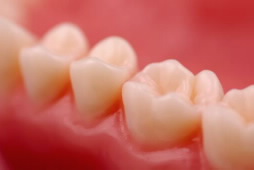FOR IMMEDIATE RELEASE
ACS News Service Weekly PressPac: March 02, 2011
Does fluoride really fight cavities by 'the skin of the teeth'?
In a study that the authors describe as lending credence to the idiom, “by the skin of your teeth,” scientists are reporting that the protective shield fluoride forms on teeth is up to 100 times thinner than previously believed. It raises questions about how this renowned cavity-fighter really works and could lead to better ways of protecting teeth from decay, the scientists suggest. Their study appears in ACS’s journal Langmuir.
Frank MÜller and colleagues point out that tooth decay is a major public health problem worldwide. In the United States alone, consumers spend more than $50 billion each year on the treatment of cavities. The fluoride in some toothpaste, mouthwash and municipal drinking water is one of the most effective ways to prevent decay. Scientists long have known that fluoride makes enamel — the hard white substance covering the surface of teeth — more resistant to decay. Some thought that fluoride simply changed the main mineral in enamel, hydroxyapatite, into a more-decay resistant material called fluorapatite.
The new research found that the fluorapatite layer formed in this way is only 6 nanometers thick. It would take almost 10,000 such layers to span the width of a human hair. That’s at least 10 times thinner than previous studies indicated. The scientists question whether a layer so thin, which is quickly worn away by ordinary chewing, really can shield teeth from decay, or whether fluoride has some other unrecognized effect on tooth enamel. They are launching a new study in search of an answer.
The authors acknowledge support from Deutsche Forschungsgemeinschaft and Saarland Ministry of Finances.
![]()

Contact
Science Inquiries: Michael Woods, Editor, 202-872-6293
General Inquiries: Michael Bernstein, 202-872-6042


